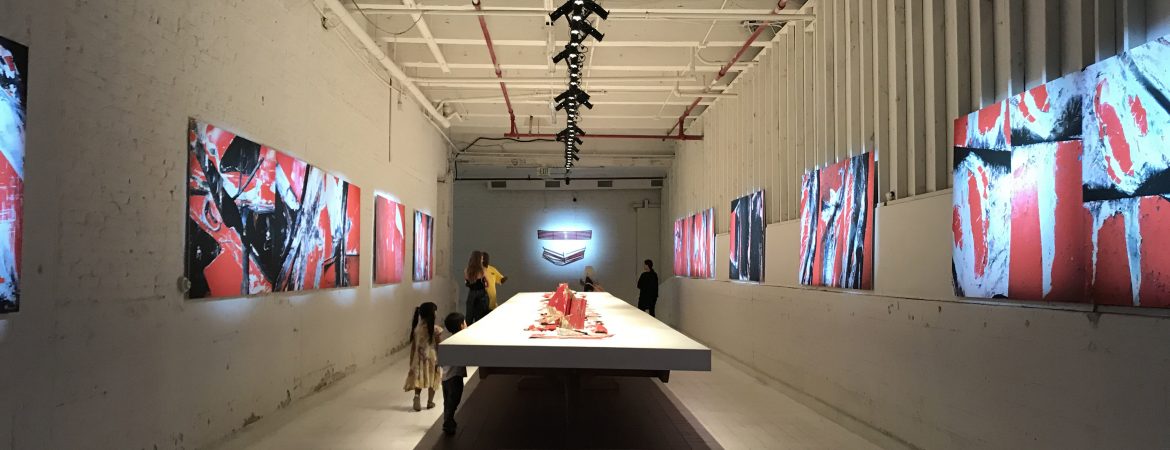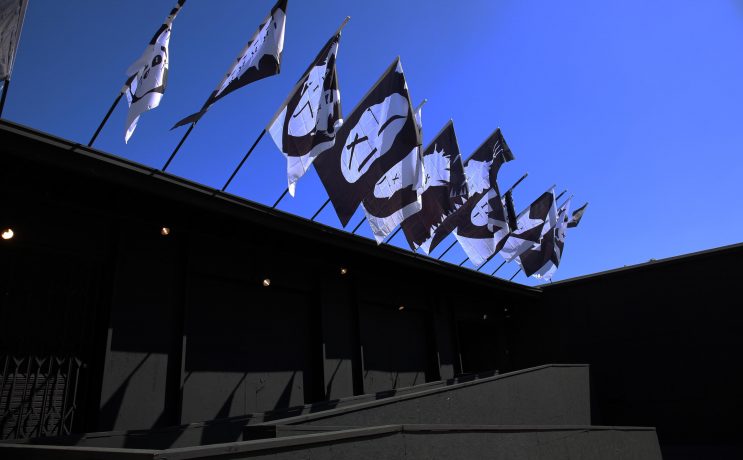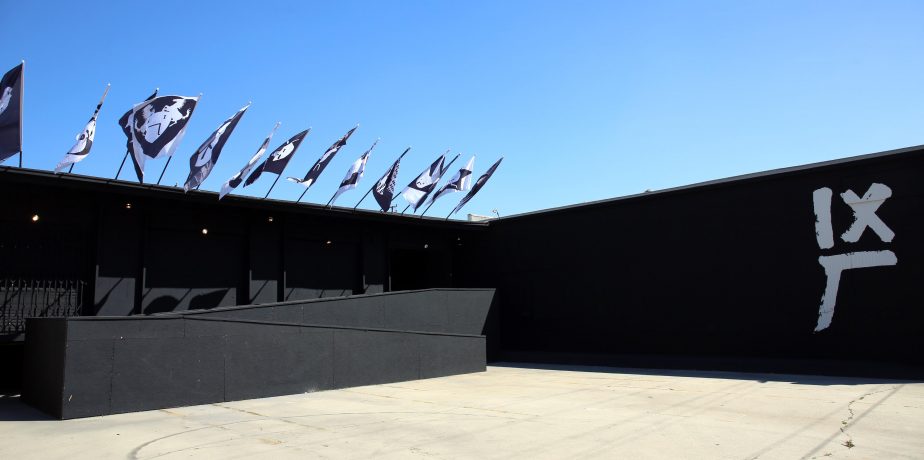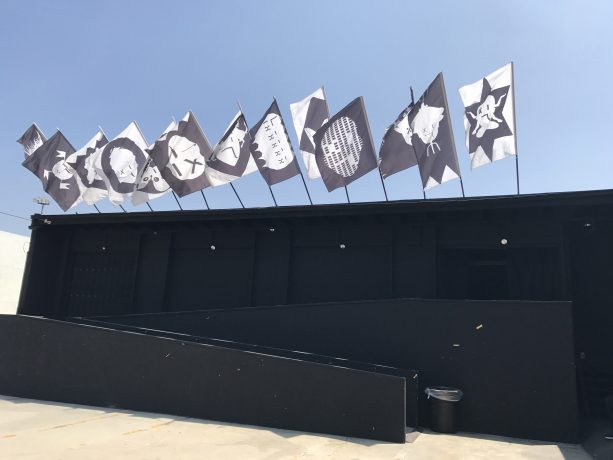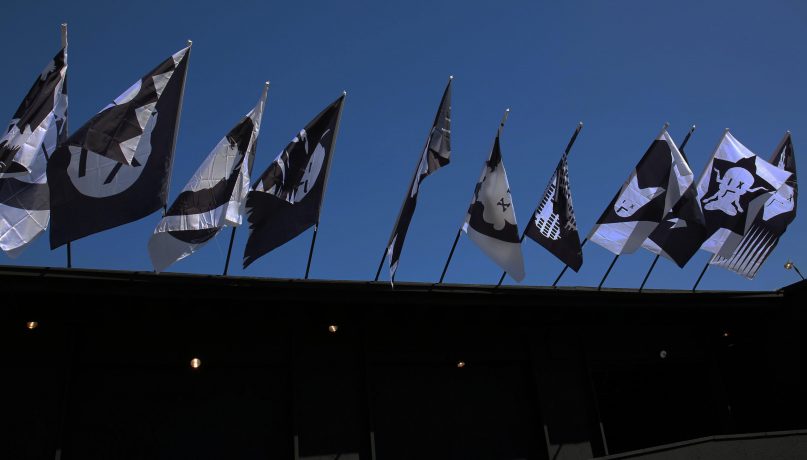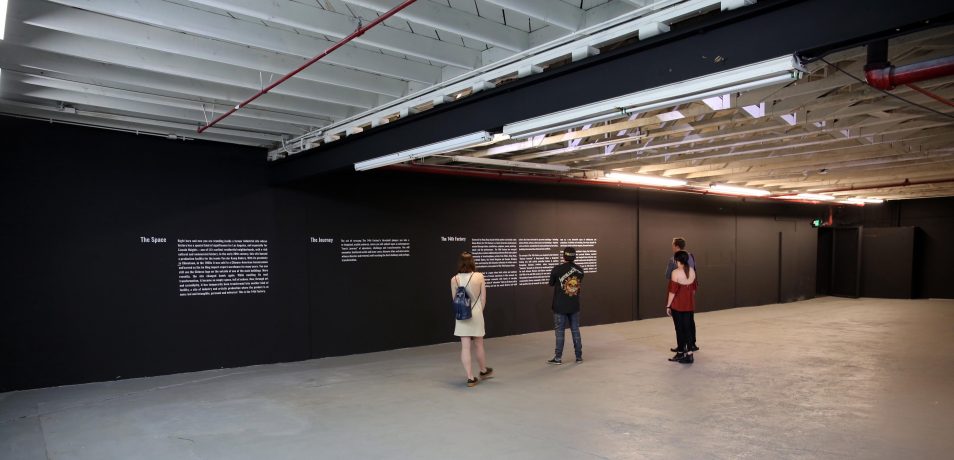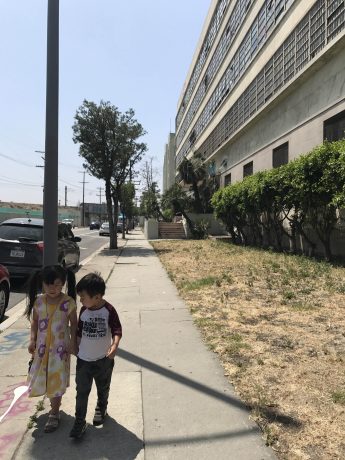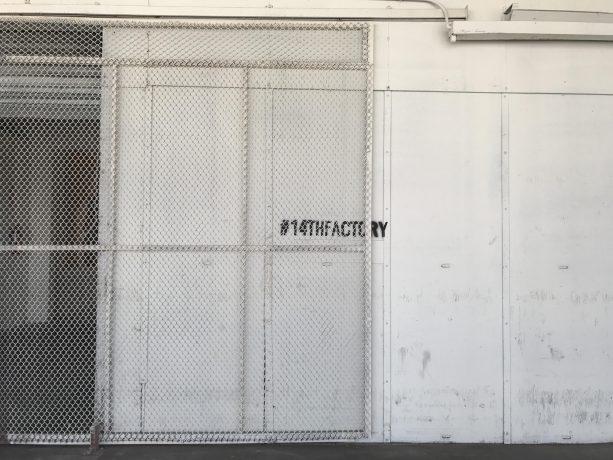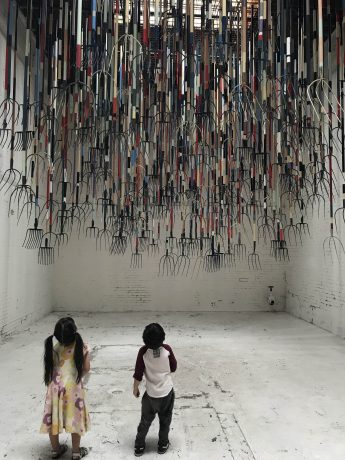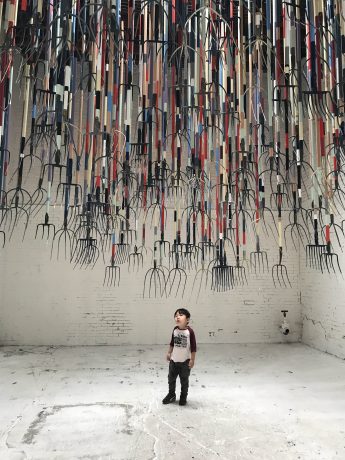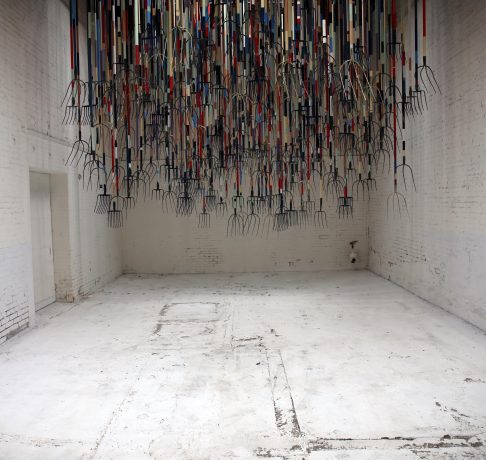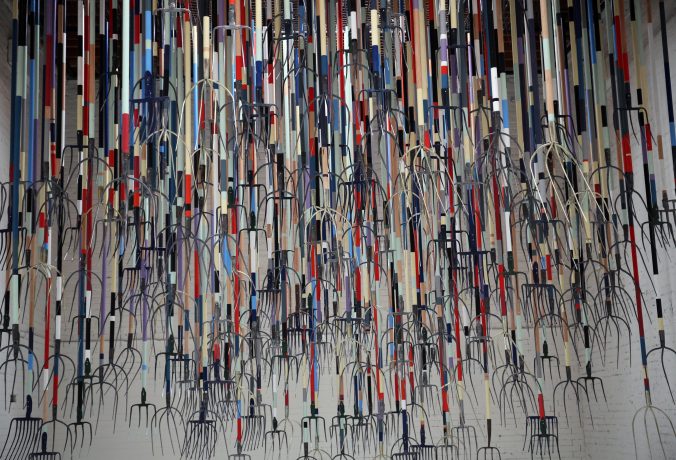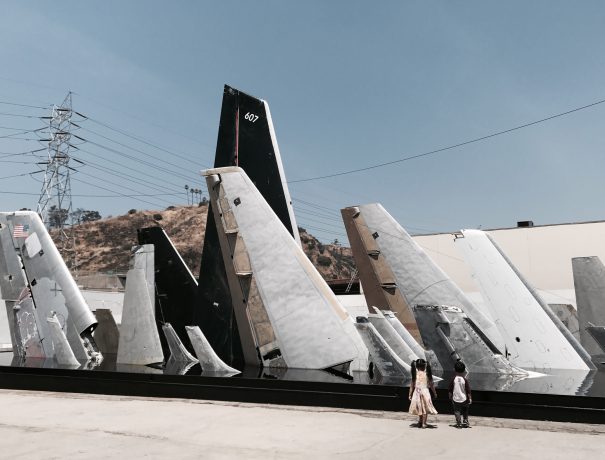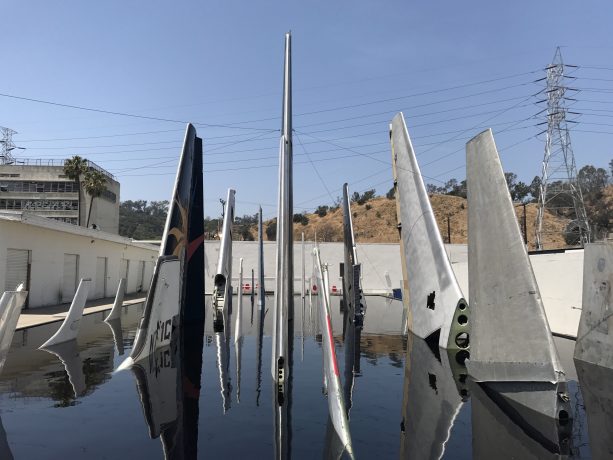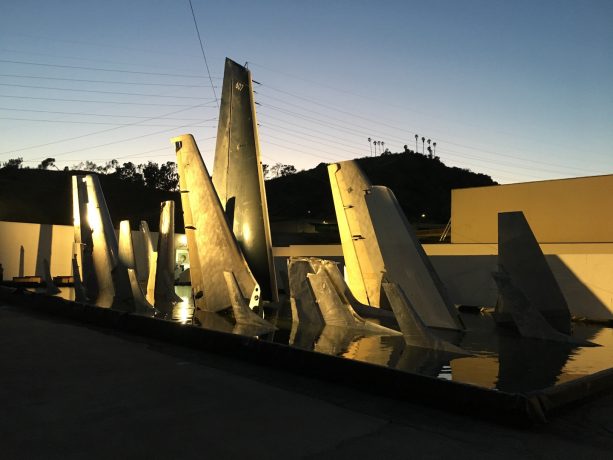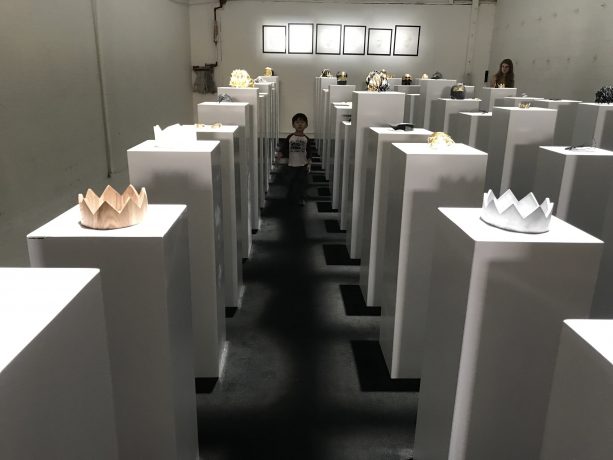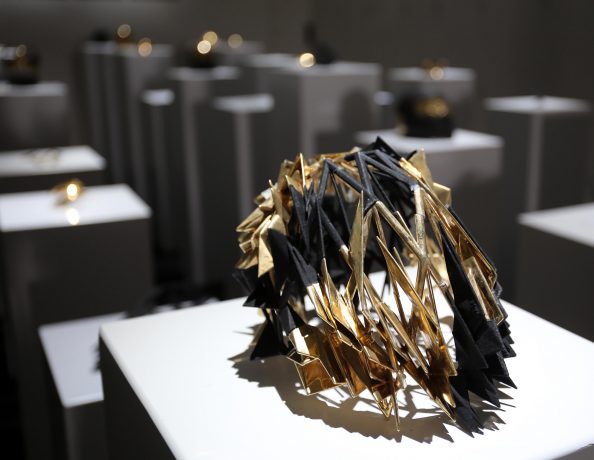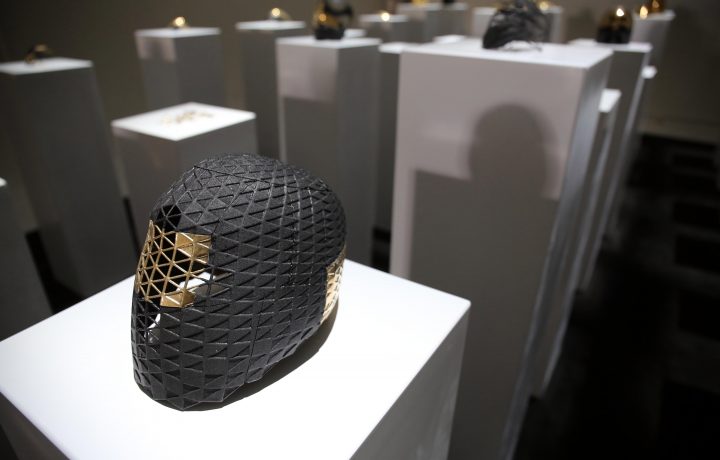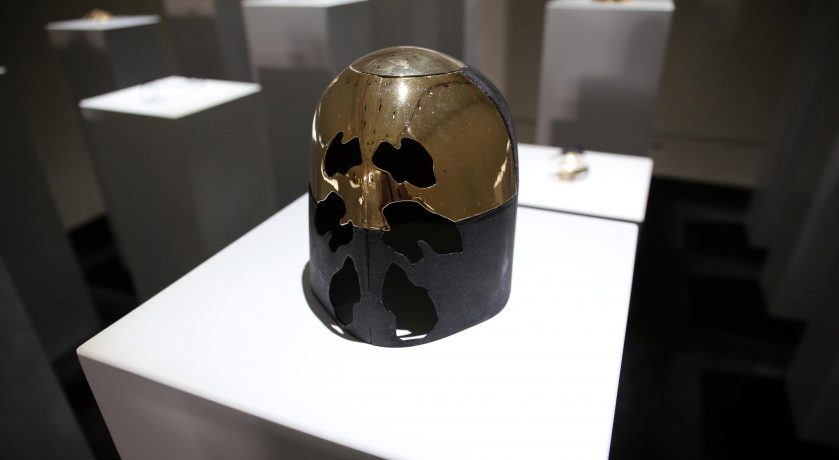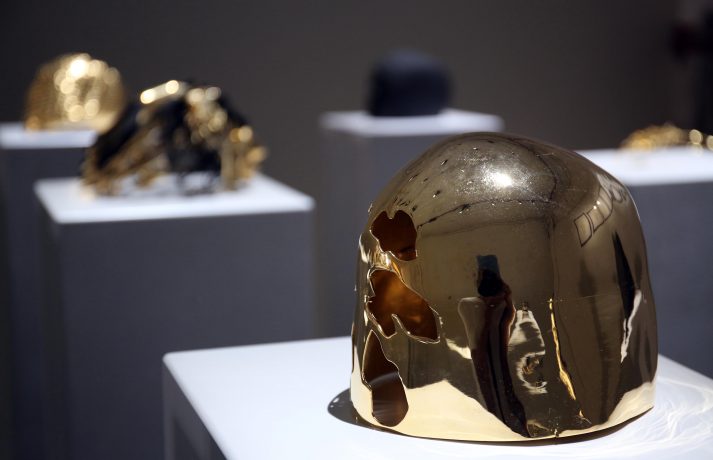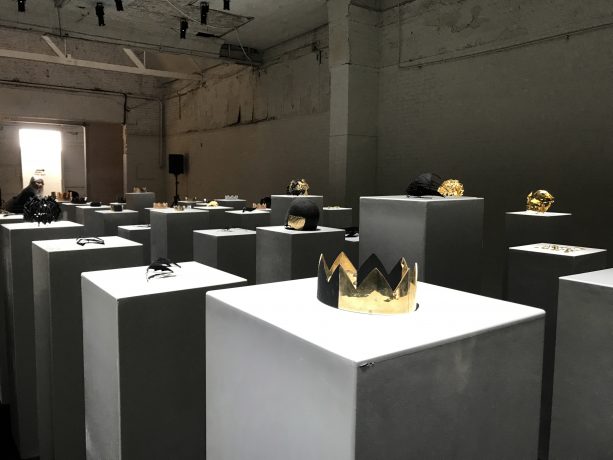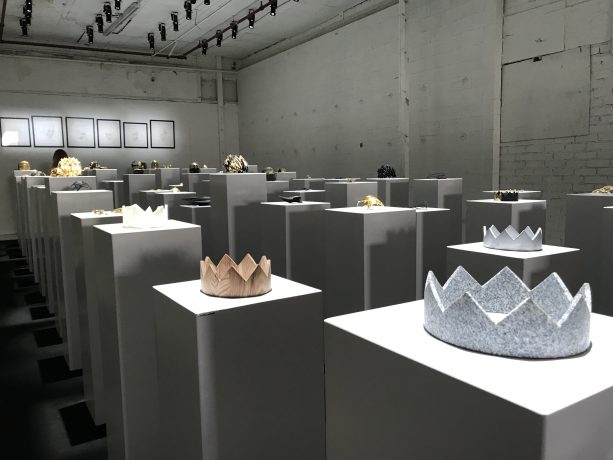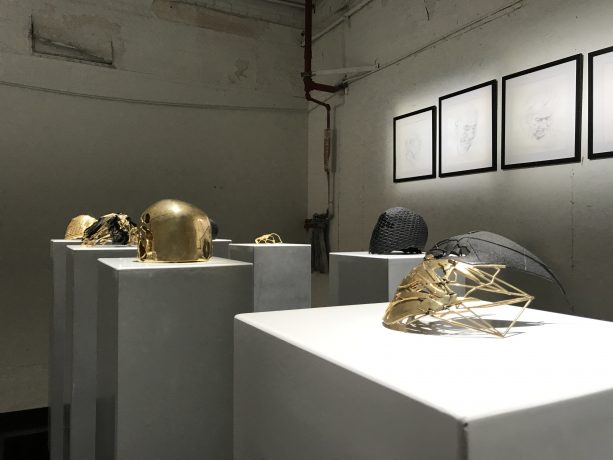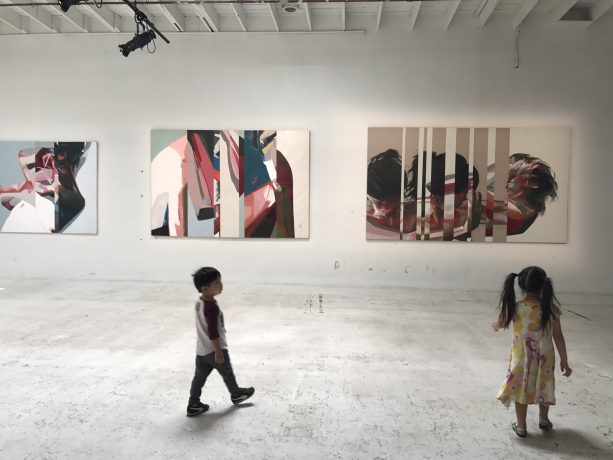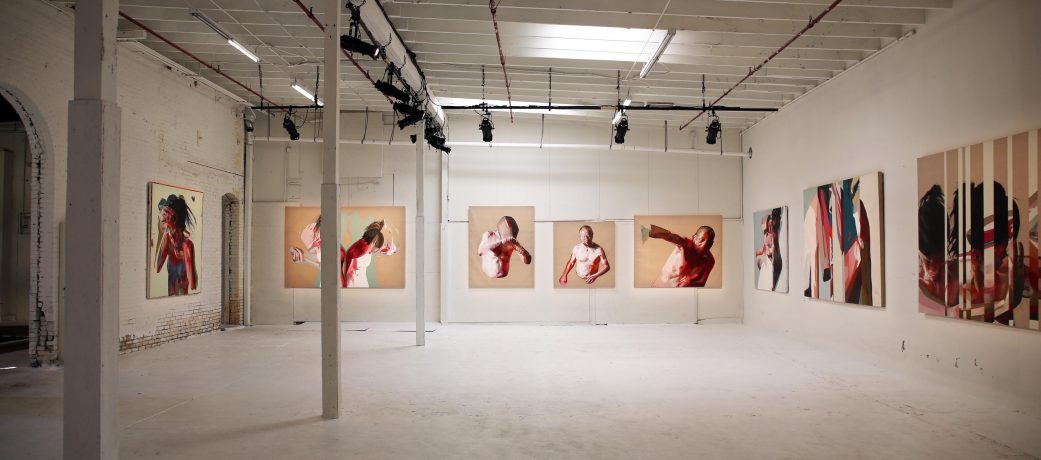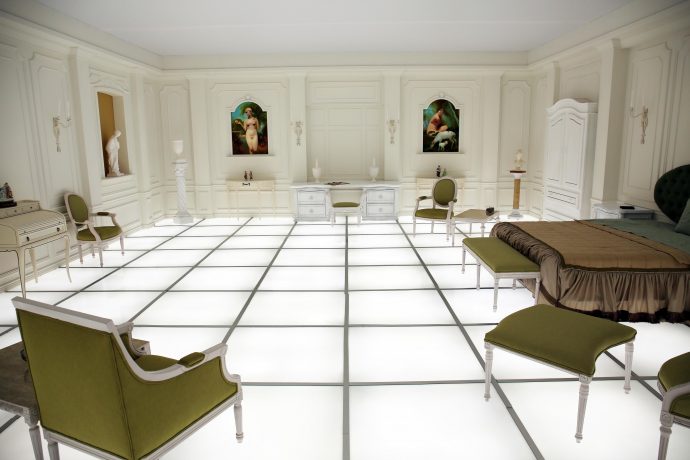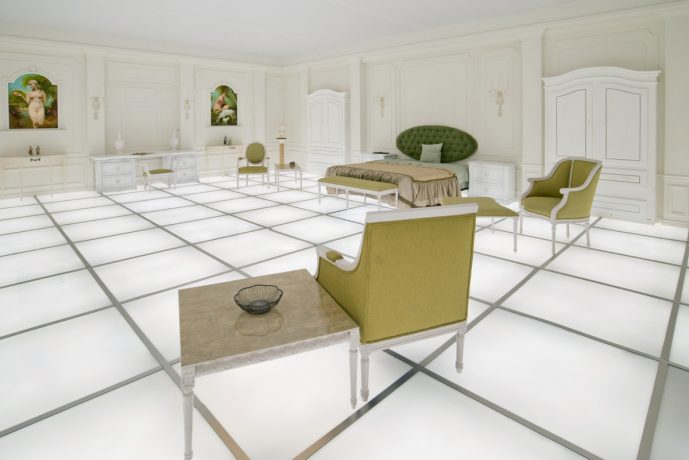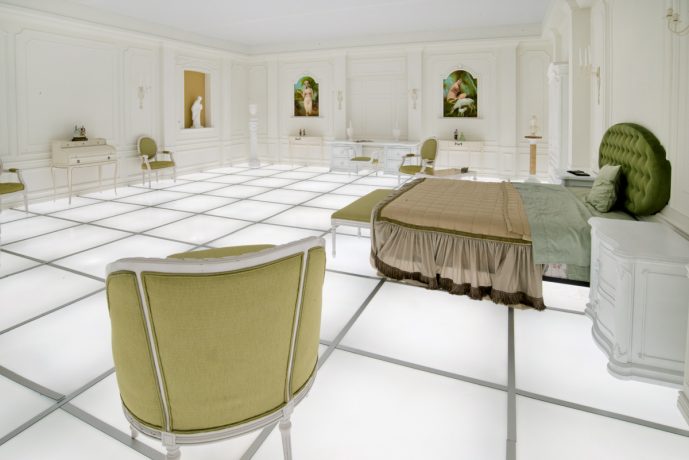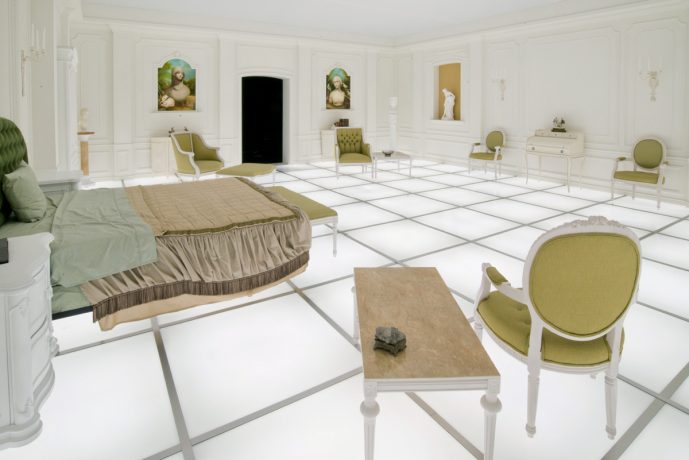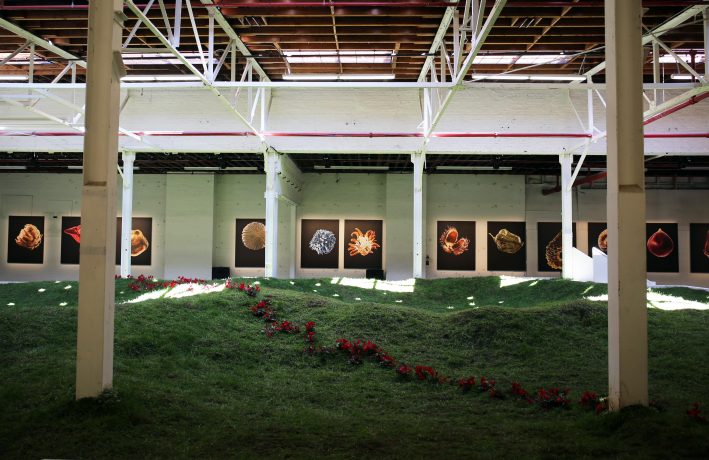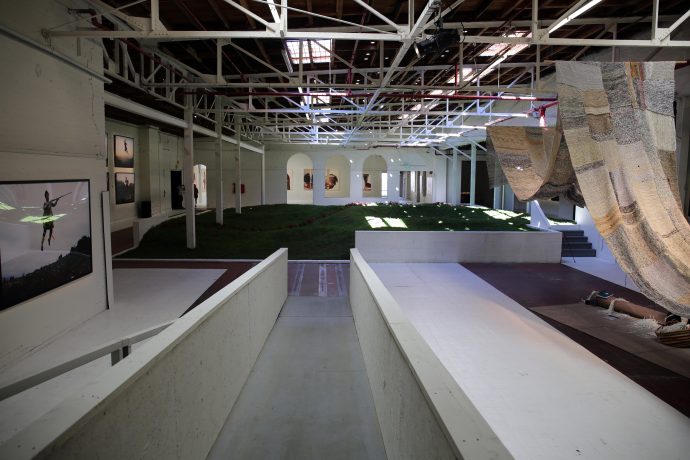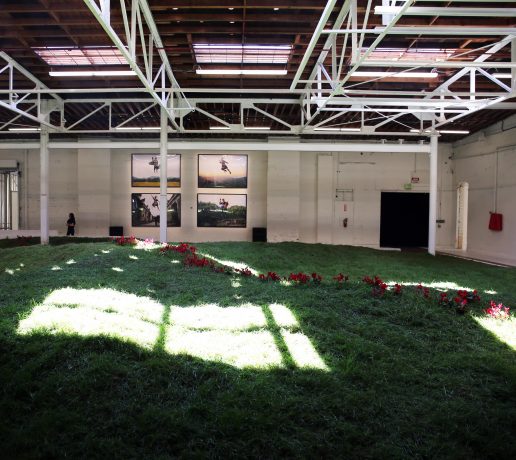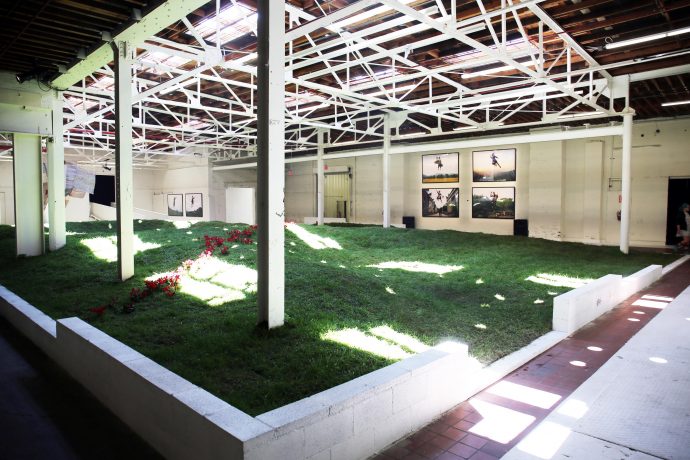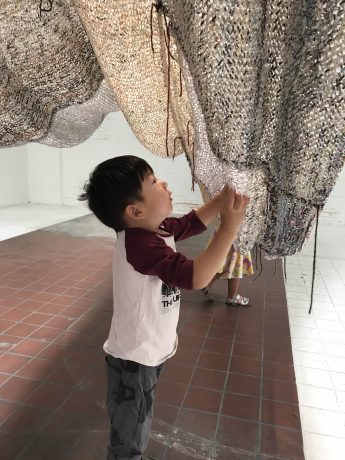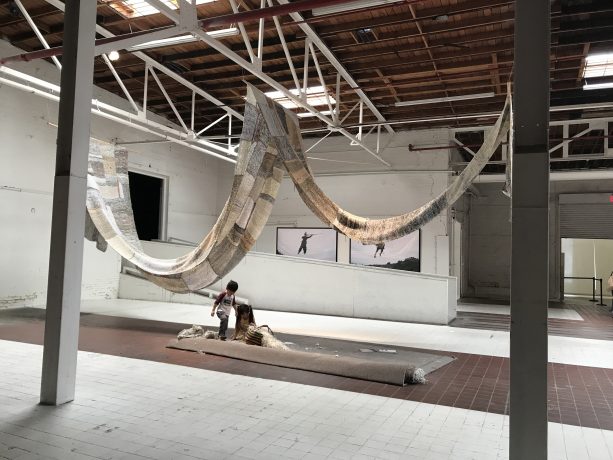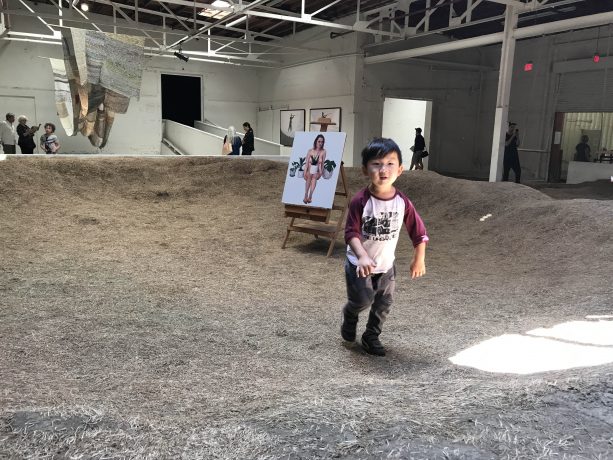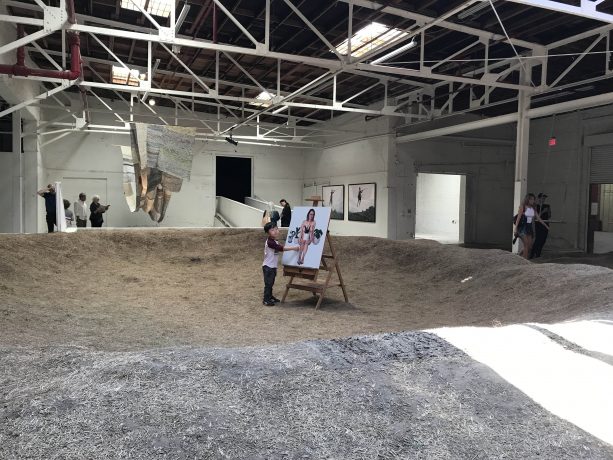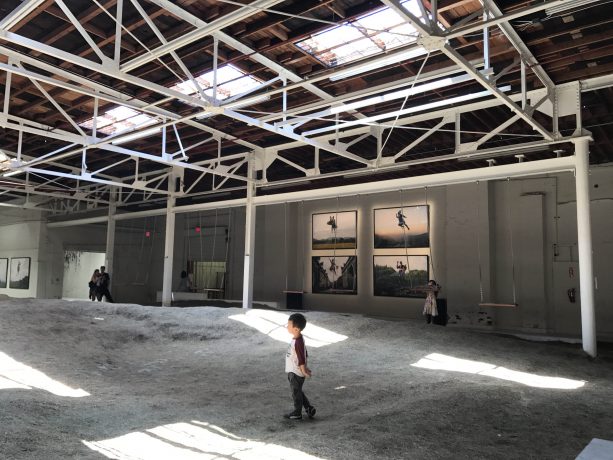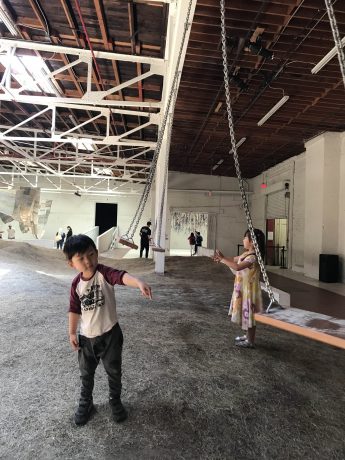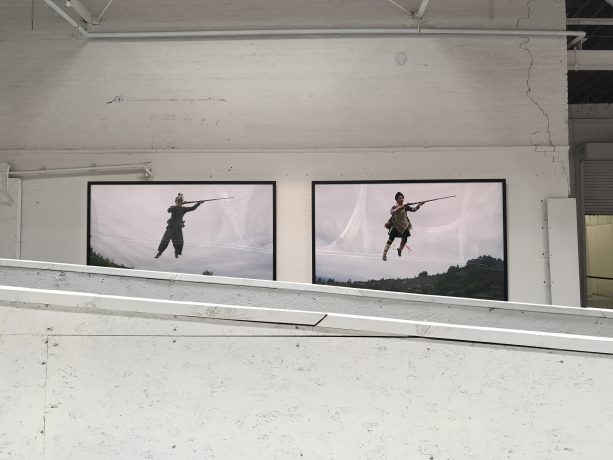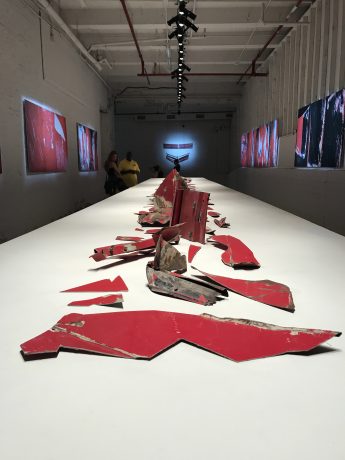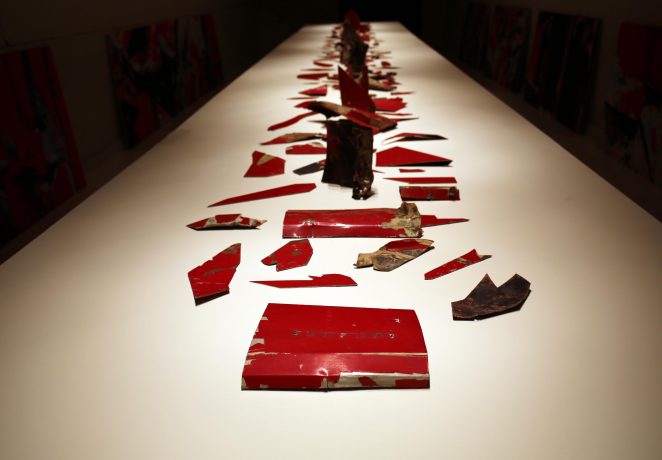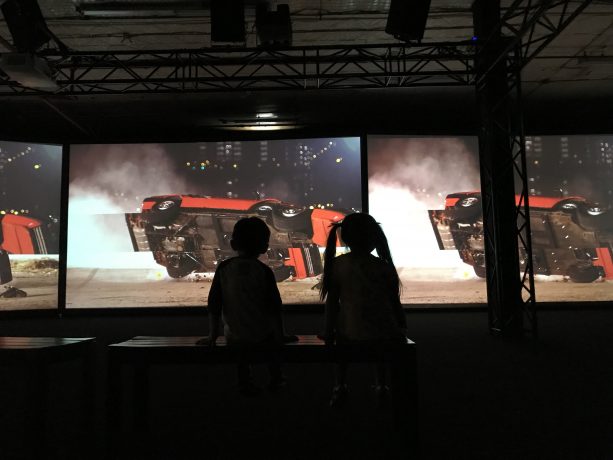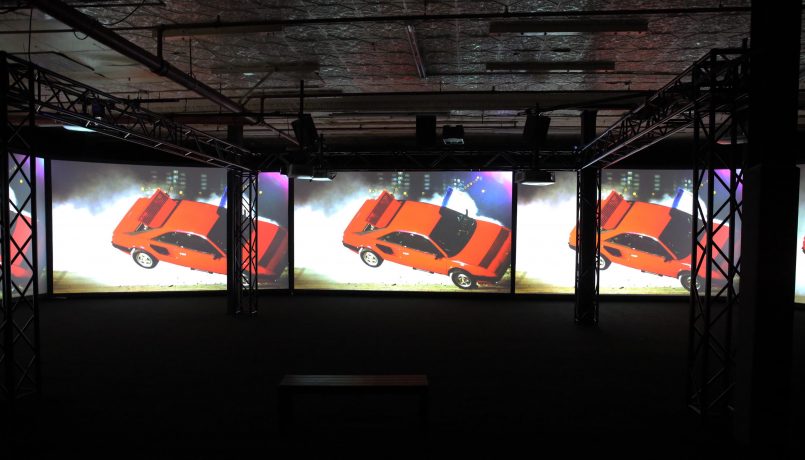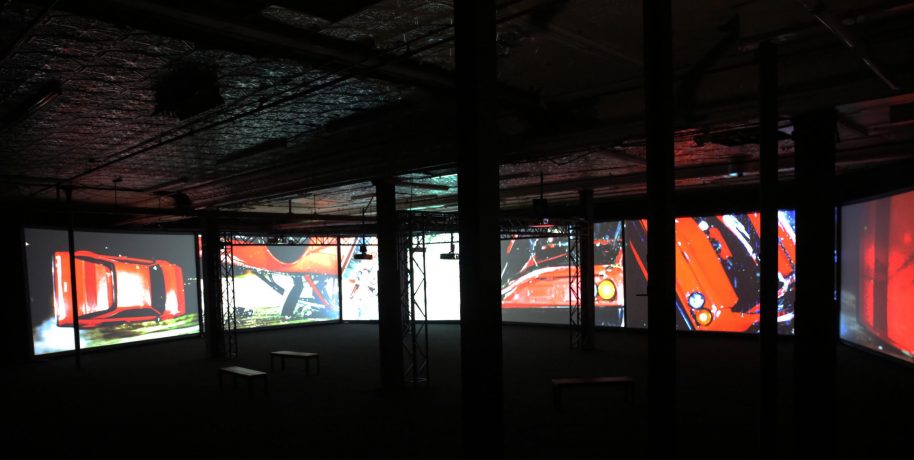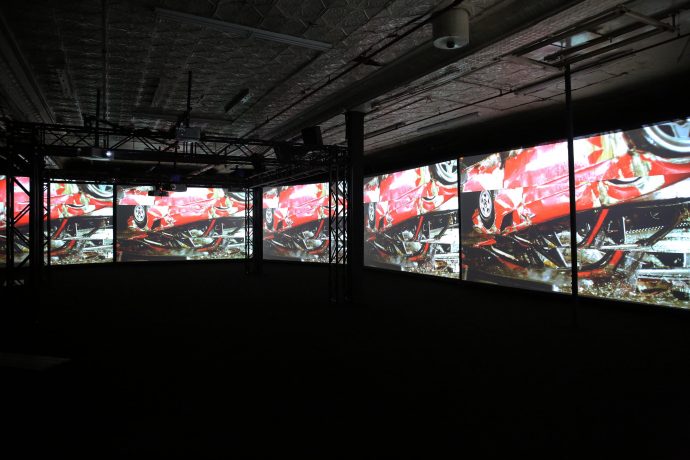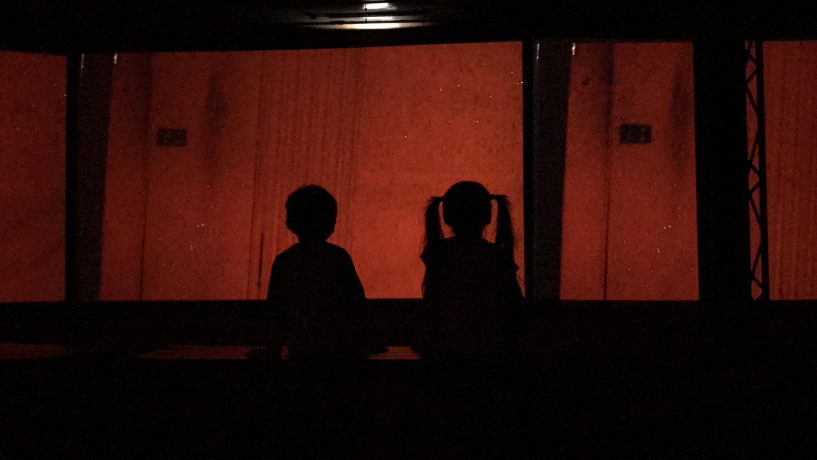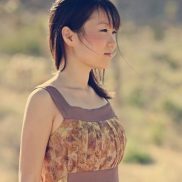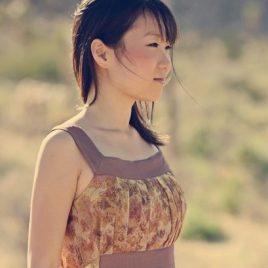Simon Birch is the artist behind The 14th Factory, an immersive pop-up Museum in downtown Los Angeles. We got a chance to visit and were mesmerized by the powerfully immersive experience. Each piece could be truly fantastic on its own in any museum or gallery; but shown together in their purposeful order really told the story that the artist intended. Pulling up to the building was a bit jarring. The area was a bit run-down and secluded from the rest of downtown LA, being in the warehouse district. However, the transition was somewhat sudden as the closely surrounding areas are going through a huge gentrification process with hip restaurants and apartment complexes. As the artist mentioned the project really felt like it was a natural fit to the neighborhood and almost felt like it could have manifested itself if it were a living organism. I personally went through a slew of emotions moving through the spaces, including tension, relaxation, excitement and wonder.
Our experience of entering the ‘museum’ through a dark hypnotizing tunnel "The Dormouse" immediately forced us to focus all the senses to what the artist intended was refreshing, a feeling of being transported to a world outside of our sensory overloaded world. The "The Barmecide Feast" was a recreation of a set from the movie "2001: A Space Odyssey" which was a transcendent and surreal experience from the previous overwhelmingly dark sculpture space. The clear open grassy space that followed including skylights and a more fluid entrance into other exhibit spaces was refreshing. The kids loved exploring on their own, pushing the swings, running around the landscape and getting into the tactile paper fabrics of another sculpture piece. "The Crusher" was the most ‘gram’ recognizable piece so we had to take a few photos under the numerous hanging pitchforks to the freight of my daughter. A kids’ favorite was the outdoor piece created from salvaged airplane parts from the Mojave Desert installed on a pool of black water "Clean Air Turbulence". They were especially intrigued to find hundreds of tiny fish or “tadpoles” as they called them, in the water. The video pieces were mesmerizing, especially the Car Crash exhibit. Moving through the next area where the actual broken pieces were displayed made the experience even more memorable and powerful. The exhibit where I felt the most clear Hong Kong experience was the close quarters video exhibit of a fast upwards moving camera filming dense apartment complexes. Sitting in the space gave a surreal feeling of being in an endless fast moving elevator, and also felt quite claustrophobic which I’m sure is what the artist hoped to convey.
We were delighted to meet Simon in person and got a chance to chat about the inspiring work. He was gracious and welcoming, and I could feel the soul of what we had just witnessed through the artists' aura, words and movements. This interview provides a glimpse of that man behind The 14th Factory. I’m excited for the evolution of this project as it moves through other parts of the world, and for others to experience this powerfully massive work of art.
For our readers, could you explain your initial inspiration for this body of work?
It is the latest result of themes I’ve been exploring for 15 years. There have been many similar multiple media projects by myself in that time, but the 14th Factory is the biggest and most ambitious both physically and conceptually. Today, in an increasingly post-industrial world, the word ‘factory’ is almost archaic. The 14th Factory speaks to the implications of this post-industrial world – a closing down, or obsolence of one model of production that began in the eighteenth and nineteenth centuries. It’s not co-incidental that the project is housed in an old commercial space in Lincoln Heights. The setting is part of its content. The project invites you to think about different scales of border-making: the nation-state as a powerful container that draws lines around places (like chalk outlines at a murder scene); the borders that cities produce as the grow – enclaves of wealth and pockets of poverty; and meaning-making itself as a practice that involves taking the world and then framing it to make it intelligible. We cut our experience of the world up in language to make it understandable.
The 14th Factory explores an inherent tension between our need for borders, and dreams of living in a borderless world. It’s a theme that is at once universal but also highly topical. Today, wherever we happen to live in the world, we’re experiencing the painful breakdown of borders – with globalization, unemployment, mass migration – but we’re also witnessing resurgent nationalism and the violent re-imposition of borders – with the building of walls and the securitization of frontiers.The title of the project The 14th Factory speaks to this theme in different ways. It alludes on one level to the Thirteen Factories of Canton (today’s Guangzhou) in Southern China. This was a zone on the outskirts of the port-city where, through the eighteenth and early nineteenth centuries, foreigners were permitted to trade for part of the year. Of course, the object of this trade was ultimately the opening up of China – imagined as a breaking down of borders in the name of free trade. Britain, and other powers, would go to war with the Qing Empire to ensure that it opened up. The Thirteen Factories becomes an emblem in this project of a contradictory impetus for lockdown and global expansion. Globalization embedded in a one world vision, the result of violent intersections. The project explores this tension, between the border and the borderless.
What were your main deciding factors to open this incredible pop up Museum in downtown Los Angeles?
The development of The 14th Factory has been an ongoing, evolutionary process. The concept has always been a kind of guerilla action that would go in and transform and activate an underutilized or static urban space. In its initial stages four years ago the idea was to go in and create an intervention in an abandoned building in Hong Kong, but as the project grew we were open to bringing it out into the world, wherever might seem a good fit. As an international project it could really go anywhere that made sense. We were offered an amazing empty heritage building in New York that we tried to make work but the environment and the situation just didn’t work out an we pulled out to look elsewhere. I have spent a lot of time in LA and have some really good mates here, a couple of them searched locations for me and when I saw this warehouse site in this ambiguous, transitional area of Lincoln Heights I just felt it was right, and Los Angeles has a kind of open-mindedness and energy that makes sense for the project right now.


I see LA as a gateway to the east and I realise holding the show there, especially in Lincoln Heights, has improved the project and is far more relevant. The neighbourhood is now part of the project, the building and the work inside seems to seep out into the surrounding world. The project being LA has allowed to breath on its content first, though the location is without doubt a brilliant collaborator. A central player in the journey, the space being an ex-Chinese import/export factory being the final piece in the puzzle.
Did the using of each different medium come to you easily and immediately from the beginning? Was there an overall map you had in your mind? Or did you find that the project evolved into itself on its own?
There is a narrative flow in the exhibition that parallels the idea of the hero’s journey, or the monomyth as Joseph Campbell calls it. The layout of the space guides you to a certain degree, but of course you also have the freedom to move in a different way through it, to backtrack, to linger. Each installation is a discrete work, or world in itself; but when taken as a total environment, particularly in this amazing space in LA, it is exponentially more powerful. That structure was used early on to ground the show as a procession of works. 5 years ago I had the basic script of what elements were necessary, a fight, a car crash, a talisman, chaos and order, the body….. and then I thought about content, then process and support (meaning collaboration). So research, investigation and exploration over a year, which led to a final composition, and agreements with who would shoot the films, design the more architectural elements, etc…. then the map was complete and then it was a question of venue and resources. That’s when the real drama began!
I would imagine it would be incredibly hard to let your vision go to a fellow artist and trust them to produce something that fits perfectly. Did you have personal close relationships with your collaborators who helped bring your visions to life?
The entire project was designed from the ground up by myself 5 years ago. It was done on the back of previous projects from as far back as ten years earlier. Each project has been an incremental progression in my process to flesh out and refine an underlying narrative that has its latest incarnation in the 14th Factory. That 14 part procession is an amalgamation of my own mythology, the universal mythologies that connect us which connects to the greater narrative of life and civilisation on this planet. The divisions are of my own making and the decisions on content for each elements are likewise a considered and well researched plan. Once this ‘script’ was in place I leaned heavily on friends, all far more talented than myself, to help bring the elements to realisation. The level of autonomy varies from pieces to piece; Tannhauser being very strictly managed and specific with 2 film maker friends helping with the practical side of shooting from a drone to the audio landscape designed by Gary Gunn in which I had little input other than feeding some documentary footage to the composer. There is always trust and belief in the collaboration, control rising and falling leading to some brilliant results beyond my expectations.


All creative involved have worked with me many times and the dialogue has sometimes been in the other direction, myself appearing in the work of Cang Xin for example in his identity exchange series of performances. A good deal of the work has only my own stamp on it and a few don’t, Li Wei’s ‘village series’ for example were not produced for the show but accidentally became an important and necessary part, filling a gap that had yet to resolve at that time. But all these ‘collaborators’ became involved because we’ve all worked together before and we all get on very well and throughout the design process it was intuitive and obvious how everyone would fit in. Many worked with me on previous projects so in some ways it perhaps feels like getting the band back together for the sequel.
What do you love most about living in Hong Kong and what has kept you there for all these years both personally and as an artist?
UK born, I’ve lived in Hong Kong for the past 20 years where I left my previous life as a construction worker and realized my life as an artist. I sold paintings. And this gave me resources to pursue more experimental work and present them independently (in lieu of very little platform). I’ve been able to maintain and grow my activity in art production and pay rent. I guess I thought I might be recognized and invited to show overseas at some point but it never happened. So I never had the opportunity to leave until I made the decision to do so with The 14th Factory. Partly because the proposal was turned down by Hong Kong. I realized that international offer would not be forthcoming and now, HK, is becoming more and more difficult to produce work and sustain. So I took the risk, go to the west with my own project independently. I did try very hard to find support from commercial, institutional and art world but had zero luck. So it’s been a mission.


I would imagine that you feel so deeply connected to each and every portion of your project. However, if you could choose one, what is your favorite aspect of the project? (You can be as specific or broad as you'd like)
The car crash I guess. Transformation is key to the project and this piece, The Inevitable probably represents that most obviously. I bought the car at a time when I needed that object. Coming from a working class background, one learned that such objects meant success, freedom or happiness, more necessary than the greater good. I have since un-learned this. Probably as a result of being diagnosed with cancer and being given 6 months to love back in 2008. Such an event does tend to give one clarity. I’ve been interested in altruism more since then and been involved with charity work and that certainly led to establishing the project as a 501c3 charity. So, one could suggest I have myself been transformed. So it felt necessary to take this last remaining material possession and destroy it, beautifully shot by Eric Hu. The value is ascribed and not actual, the car has little inherent value though I understand the arguments against that (technology, innovation, mining, transport, design, etc). But in my opinion that is subjective and to destroy the vehicle, up cycle it into film, photographs and objects that are then shared, it becomes far more valuable to far more people than to perhaps only myself in its original form and to its creators.The ego was in the purchase, counteracted in its destruction.The work is not a protest against materialism or consumerism though I see how it could be read as such, for me it is about hope, innovation, creation and new ways of looking at how we move forward.
What is the future of The 14th Factory? What would you like for it to become?
We are just getting started. The is the best we could do with limited resources and the huge compromise of having to become and entrepreneur and our own manager and agent to realise the project. With success in LA we hope to use this proof of concept, we hope the attract the necessary support in terms of organisational structure and representation moving forward so we can get back to art making. If that were possible and all our energies were focused on the content rather than finding resources to realise it and ways to communicate it, well, then you’ll see the real project…. London, NYC, Berlin, Shanghai…all in our future and who knows where else.
